#L'amour et psyche
Text

William Adolphe Bouguereau (French, 1825-1905)
L'Amour et Psyché, 1899
#different colour and quality#not the ai fix version#l'amour et psyche#original quality#french art#french#france#mythological art#mythology#western civilization#1800s#William Adolphe Bouguereau#William Bouguereau#French painter#europe#French painting#European painting#European painter#classical art#fine art#greek mythology#L'amour et psyche#cupid and psyche#art#painting#oil painting#oil on canvas#flying#beautiful#beautiful art
2K notes
·
View notes
Text
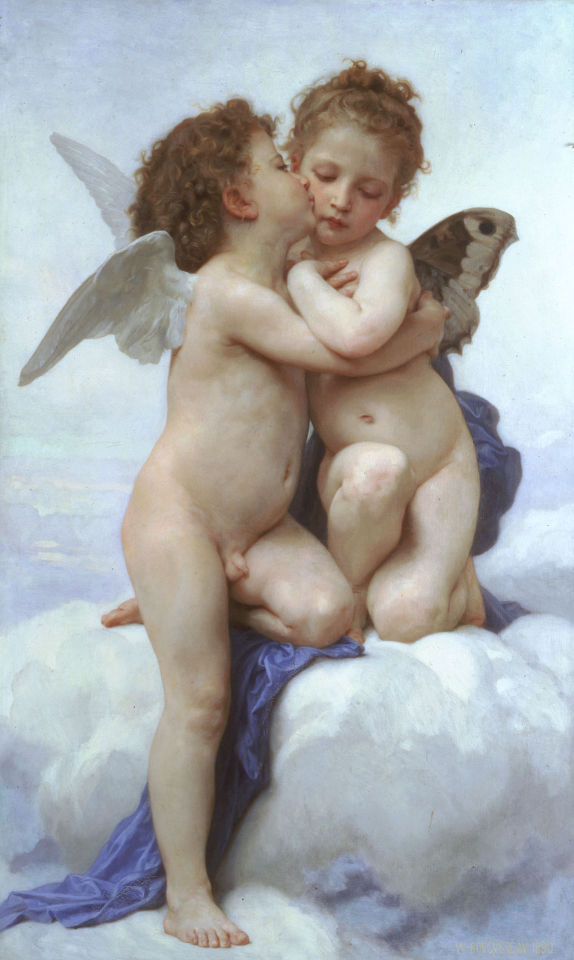
L'Amour et Psyché, enfants, William-Adolphe Bouguereau
2 notes
·
View notes
Text

3 notes
·
View notes
Text

'Psyché et l'Amour (or Psyche Receiving Cupid's First Kiss),' (1798),
François Gérard (1770–1837),
Oil on canvas, H 186 cm × W 132 cm,
Musée du Louvre, Paris, France.
#art#psyche#cupid#amour#françois gérard#oil painting#musée du louvre#french art#mythological art#psyché et l'amour#psyche receiving cupid's first kiss#17th century art
2 notes
·
View notes
Text

L'Amour et Psyche by Eugène Médard (1878)
#eugene medard#art#paintings#fine art#19th century#19th century art#romanticism#romanticism art#painting#french art#french artist#mythology#greek mythology#greek gods#cupid#cupid and psyche#psyche#classic art
4K notes
·
View notes
Text

Inspired by Psyche et L'Amour
63 notes
·
View notes
Text


dream on stream // l'amour et psyche, enfants by william adolphe bouguereau (1890)
130 notes
·
View notes
Text

François Gérard (French, 1770–1837) • Psyché et l'Amour (Cupid and Psyche) • 1798 • Musée de Louvre
#art#painting#fine art#art history#mythological painting#allegorical painting#François Gérard#french romantic painter#18th century painting#french artist#the louvre
21 notes
·
View notes
Text

'l'amour et psyché, enfants' (cupid and psyche, children), 1890 by william-adolphe bouguereau
11 notes
·
View notes
Photo

L'Amour et Psyche (1899) by William-Adolphe Bouguereau (1825 - 1905)
The painting features Greek mythological figures Eros and Psyché, sharing an embrace.
5 notes
·
View notes
Text

François-Édouard Picot (French, 1786-1868)
L'Amour et Psyché, 1817
Musée du Louvre
#François-Édouard Picot#french#france#classical art#classic art#traditional art#art#fine art#european art#europe#l'amour et psyche#1800s#european#oil painting#fine arts#mediterranean#europa#1700s#psyche#cupid#mythological art#french art#mythology#greek mythology#roman mythology#cradle of civilization
360 notes
·
View notes
Photo
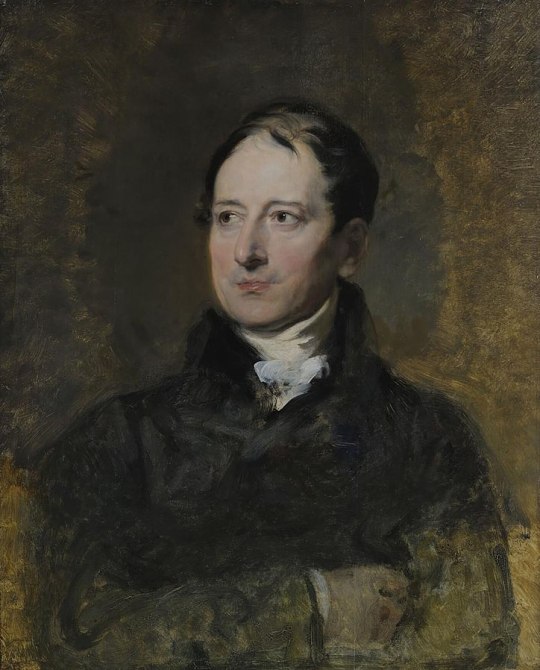
Thomas Lawrence - Portrait of François Pascal Simon, Baron Gérard (1770–1837) aged 54 - 1824
oil on canvas, height: 70 cm (27.5 in); width: 58 cm (22.8 in)
Palace of Versailles, Paris, France
Sir Thomas Lawrence PRA FRS (13 April 1769 – 7 January 1830) was a leading English portrait painter and the fourth president of the Royal Academy. Lawrence was a child prodigy. He was born in Bristol and began drawing in Devizes, where his father was an innkeeper at the Bear Hotel in the Market Square. At the age of ten, having moved to Bath, he was supporting his family with his pastel portraits. At eighteen he went to London and soon established his reputation as a portrait painter in oils, receiving his first royal commission, a portrait of Queen Charlotte, in 1790. He stayed at the top of his profession until his death, aged 60, in 1830.
Self-taught, he was a brilliant draughtsman and known for his gift of capturing a likeness, as well as his virtuoso handling of paint. He became an associate of the Royal Academy in 1791, a full member in 1794, and president in 1820. In 1810 he acquired the generous patronage of the Prince Regent, was sent abroad to paint portraits of allied leaders for the Waterloo chamber at Windsor Castle, and is particularly remembered as the Romantic portraitist of the Regency. Lawrence's love affairs were not happy (his tortuous relationships with Sally and Maria Siddons became the subject of several books) and, in spite of his success, he spent most of life deep in debt. He never married. At his death, Lawrence was the most fashionable portrait painter in Europe. His reputation waned during Victorian times, but has since been partially restored.
François Pascal Simon Gérard (4 May 1770 – 11 January 1837),[1] titled as Baron Gérard in 1809, was a prominent French painter. He was born in Rome, where his father occupied a post in the house of the French ambassador, and his mother was Italian. After he was made a baron of the Empire in 1809 by Emperor Napoleon, he was known formally as Baron Gérard.
François Gérard was born in Rome to J. S. Gérard and Cleria Matteï. At the age of twelve, Gérard obtained admission into the Pension du Roi in Paris. From the Pension, he passed to the studio of the sculptor Augustin Pajou, which he left at the end of two years for the studio of the history painter Nicolas-Guy Brenet, whom he quit almost immediately to place himself under Jacques-Louis David.
In 1789, he competed for the Prix de Rome, which was carried off by his comrade Girodet. In the following year (1790), he again presented himself, but the death of his father prevented the completion of his work and obliged him to accompany his mother to Rome. In 1791, he returned to Paris, but his poverty was so great that he was forced to forgo his studies in favor of employment which would bring in immediate profit. David at once availed himself of his help, and one of that master's most celebrated portraits, of Louis-Michel Le Pelletier de Saint-Fargeau, may owe much to the hand of Gérard. This painting was executed early in 1793, the year in which Gérard, at the request of David, was named a member of the revolutionary tribunal, from the fatal decisions of which he, however, invariably absented himself.
In 1794, he obtained the first prize in a competition, the subject of which was The Tenth of August, that is, the storming of the Tuileries Palace. Further stimulated by the successes of his rival and friend Girodet in the Salons of 1793 and 1794, Gérard (aided by Jean-Baptiste Isabey, the miniaturist) produced in 1795 his famous Bélisaire. In 1796, a portrait of his generous friend (conserved today in the Louvre) obtained undisputed success, and the money received from Isabey for these two works enabled Gérard to execute in 1797 his Psyche et l'Amour (illustration). At last, in 1799, his portrait of Madame Mère established his position as one of the foremost portrait-painters of the day.
In 1808, as many as eight (and in 1810, no less than fourteen) portraits by him were exhibited at the Salon, and these figures afford only an indication of the enormous numbers which he executed yearly. All of the leading figures of the Empire and of the Bourbon Restoration, and all of the most celebrated men and women of Europe, sat for Gérard. This extraordinary vogue was due partly to the charm of his manner and conversation, for his salon was as much frequented as his studio. Madame de Staël, George Canning, Talleyrand and the Duke of Wellington have all borne witness to the attraction of his society.
Rich and famous, Gérard was stung by remorse for earlier ambitions abandoned; at intervals, he had indeed striven with Girodet and other rivals to prove his strength at history painting, still a more prestigious genre than portraiture. His Bataille d'Austerlitz (1810) showed a breadth of invention and style which was even more conspicuous in L'Entrée d'Henri IV à Paris (at Versailles), the work with which in 1817 he paid homage to the returned Louis XVIII. After this date, Gérard declined, watching with impotent grief the progress of the Romantic school.
Loaded with honors – baron of the Empire in 1809, member of the Institut on 7 March 1812, officer of the Légion d'honneur, first painter to the king – he worked on, sad and discouraged. The revolution of 1830 added to his disquiet, and on 11 January 1837, after three days of fever, he died.
Gérard is best remembered for his portraits. The color of his paintings has suffered, but his drawings show in uninjured delicacy the purity of his line, and those of women are specially remarkable for a virginal simplicity and frankness of expression. His students included Heinrich Christoph Kolbe.
6 notes
·
View notes
Text






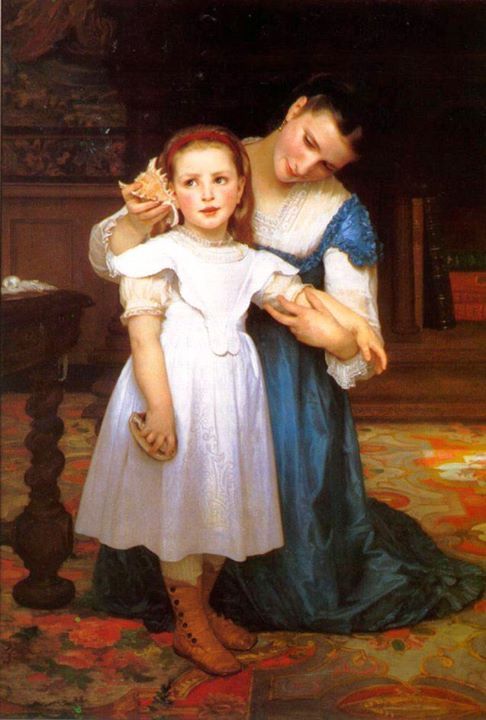
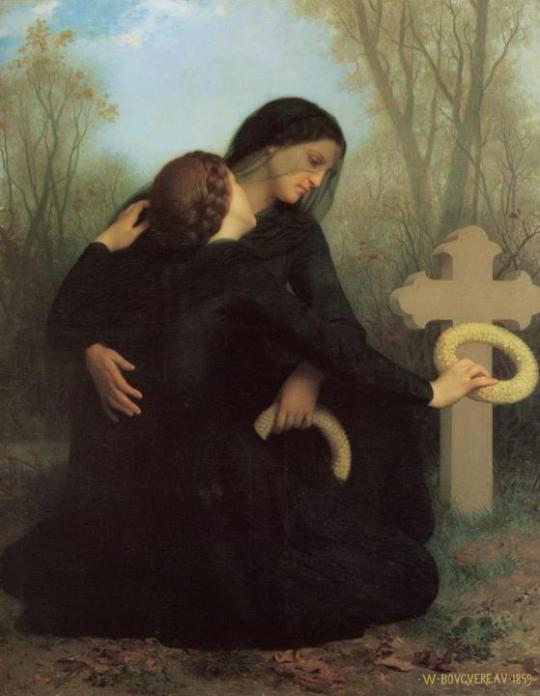

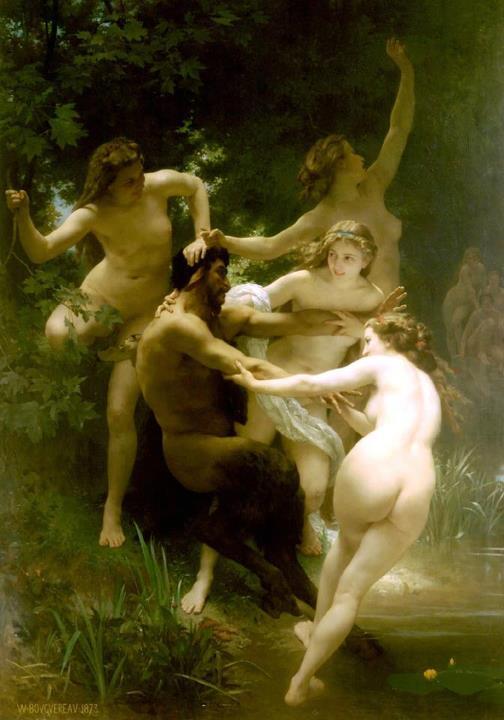
William A. Bouguereau
1-. Dante y Virgilio en el infierno
2-. Equality before Death
3-. Maternal Admiration
4-. Venus
5-. Hermanas
6-. L'Amour et Psyché
7-. Le Coquillage
8-. Le Jour des Morts
9-. Le Ravissement de Psyche
10-. Nymphes et satyre
1 note
·
View note
Text
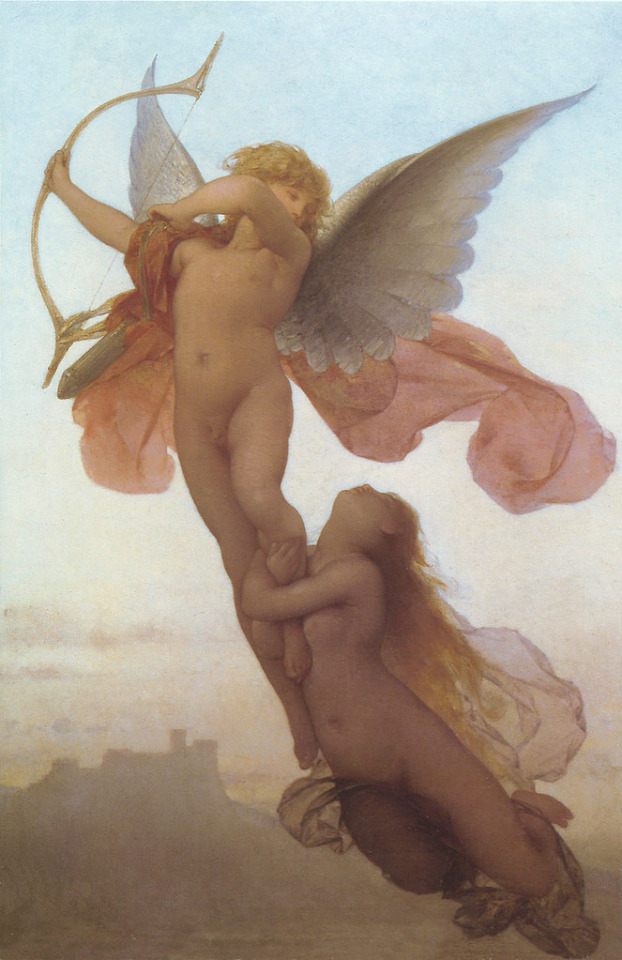
L'Amour et Psyche
Eugène Médard
21 notes
·
View notes
Text
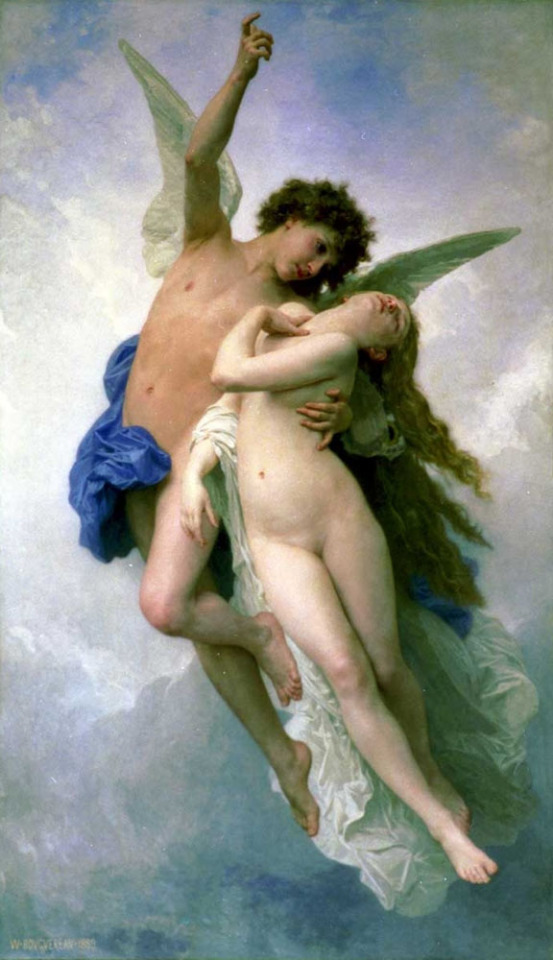
Psyche et L'Amour by William-Adolphe Bouguereau (1889)
#william-adolphe bouguereau#art#paintings#fine art#19th century#19th century art#academism#academicism#academic art#painting#french art#french artist#mythology#greek mythology#psyche#cupid#cupid and psyche#greek gods#classic art
1K notes
·
View notes
